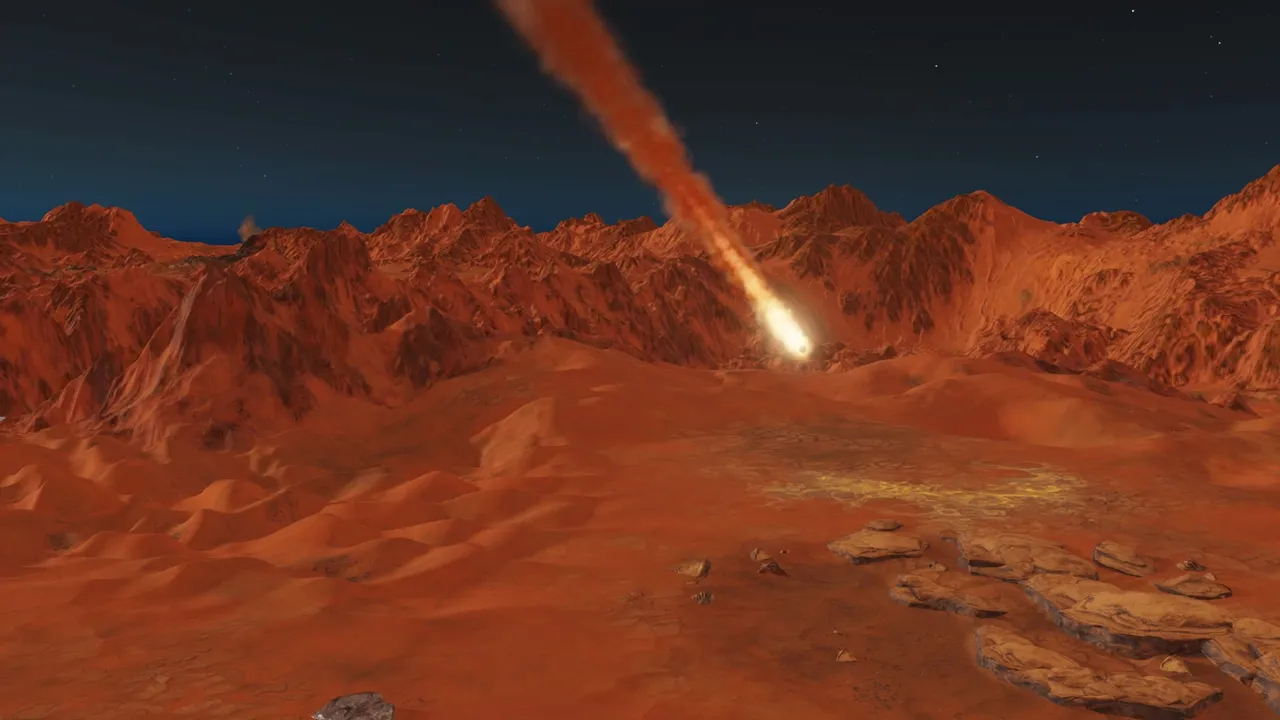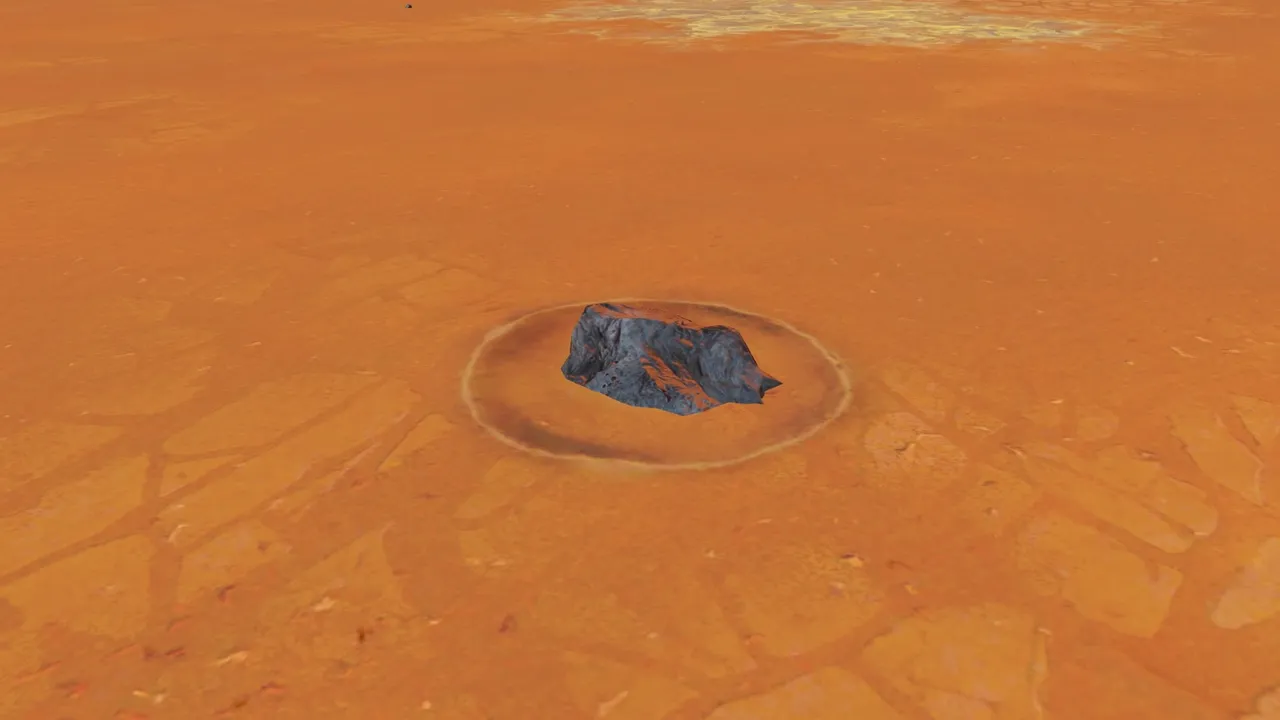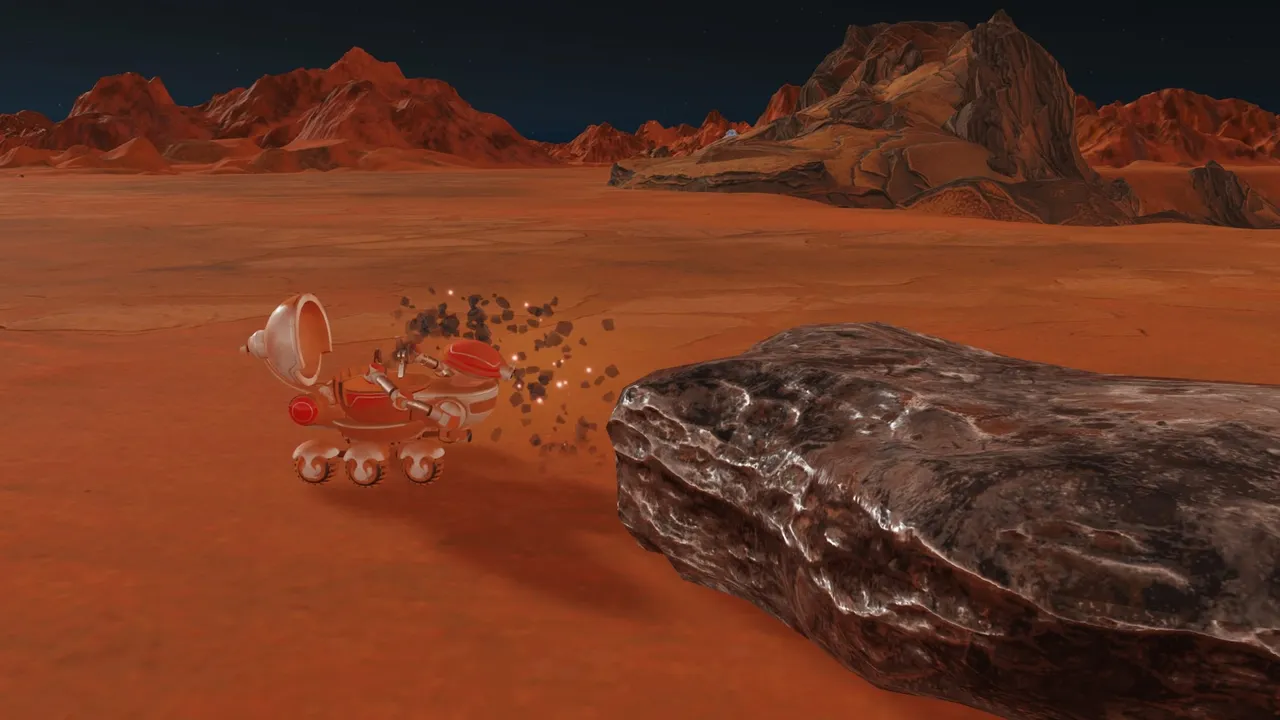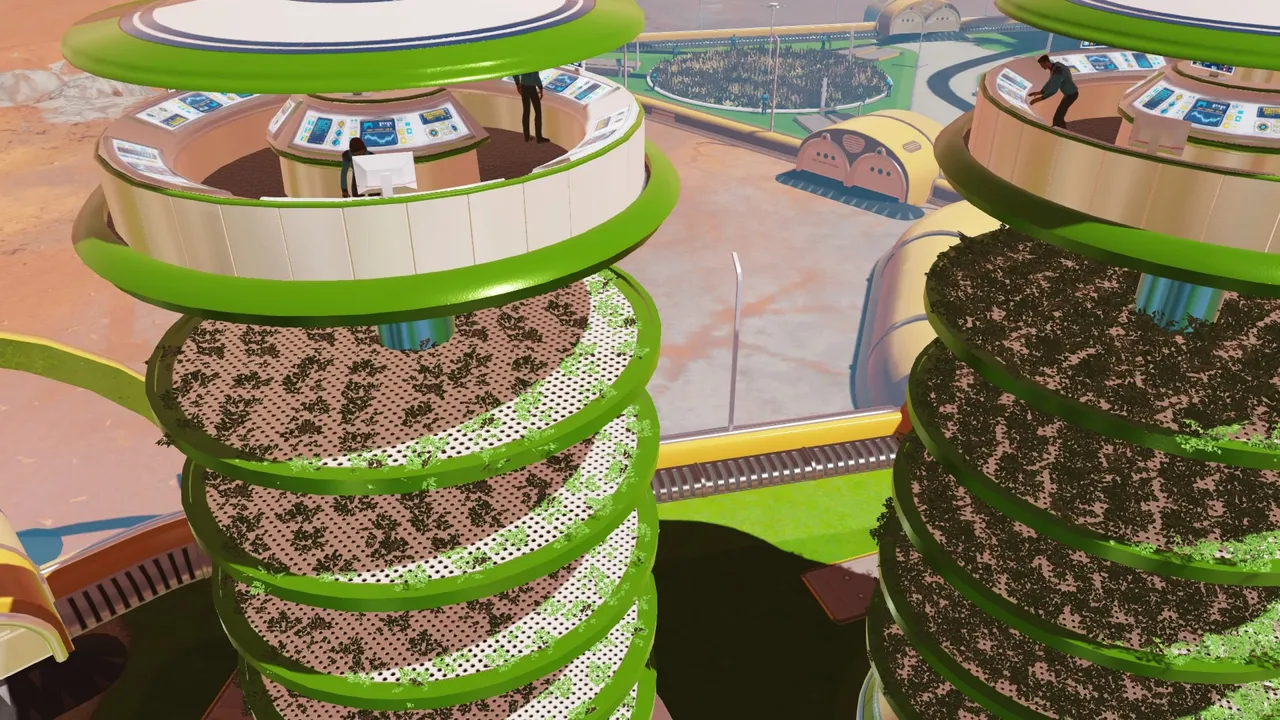The small colony on Yggdrasil, as the moon came the be known, was doing fairly well, their only threat thus far being meteor showers. They remained vigilant in case the alien attackers traced them to this system. Scans revealed that Belen, the parent planet, has a thin system of rings composed of rocky debris, dust, and a small amount of ice particles. Although the meteors originating in the rings pose a threat, they also potentially shield the the colony's presence due to the amount of radio interference they cause.
Suddenly, the lights began to flash and an alarm rang in the research lab. It was a proximity alert for an incoming meteor. The colony had 18 standard hours to track its trajectory and plan an evacuation, if necessary.

The habitat and its citizens appeared to be in danger initially, but as more time passed the readings began to get more accurate. The astronomy team continued tracking the small meteor's course and determined the impact point to be a safe enough distance away from the habitat though close enough to witness and, more importantly, recover.
There were many potential uses for the meteorite. If it was metallic, it could be used for fashion parts and tune up the existing machinery in the colony. Even if it turned out to be stony, the regolith could be processed into concrete and used to build more facilities. Everyone was excited to receive this gift from the heavens.
The scientists all eagerly counted down for impact, "3...2...1!" There was a loud boom and low rumbling for a few seconds. The low gravity caused the dust lifted in the impact to hang in the air for minutes before finally settling.

A single drone was deployed to investigate. It would bore into the meteorite and bring back enough material for all the scientists of different backgrounds to study.

Taking the first samples, the autonomous unit sent back data from its rudimentary analysis of the meteorite's composition. It was stony, but also rich in iron, which was great news for the engineers. While this information was valuable on its own, still more was yet to be discovered from the more advanced analysis equipment back in the labs.
Though nothing of the sort had ever been documented on old Earth, the resident biologist studied his sample for signs of panspermia, microscopic life-forms hitching a celestial ride and seeding other celestial bodies.
The sample showed no signs of life. All the biologist could see through the microscope's lens was porous little pebbles and grains of shiny metallic sand. Just what I expected, thought the biologist, apparently not too disappointed, and took that as his cue to go on his lunch break.
There weren't many options when it came to food. However, the first crop of strawberries and tomatoes will soon be ready. The seeds were salvaged from the last of the ration packs. Until then, everyone will just have to keep eating microgreens that the geneticians grew from cell cultures. They're still working on modifying the tomatoes so that they could produce starchy tubers like their potato cousins.

After lunch, the biologist returned to his microscope. The other scientists were still poring over their samples and theorizing how they could refine the meteorite's resources and an engineer was drawing up some schematics for a foundry. The biologist increased the magnification and looked through the microscope again. This time he could see what looked like tiny bubbles moving around and swallowing smaller particles. "Panspermia!" he exclaimed, so loudly that it caused all the other scientists in the room to look over at him as if he was insane. The biologist increased the magnification again. This time he could see the bacteria-like life-form's organelles through its translucent body. There were many of them. Using a pipette, the biologist siphoned up some genetic material from what he presumed to be the life-form's nucleus. He had some work for the genetician to do.
The biologist collaborated with the genetician to analyze the genetic code of the organism in an effort to discover, and perhaps augment, its ecology. By the time the suns had set, they had coded the entire genome. They learned that the alien bacteria fed on silica found in rocks and that its respiratory system used nitrogen gas and exhaled nitrogen oxide.
"If we could alter the roots of the microgreens so that they could harbor this organism," the genetician thought out loud.
"Then we could create a self-fertilizing plant!" The biologist finished his sentence.
The bacteria's nitrogen oxide waste product would make a fine fertilizer for the microgreens, effectively turning them into actual leafy greens and increasing food production for the colony. A side project also began to breed a supergerm that could be cultured to produce harvestable fertilizer for those plants that will not be housing the germ in their roots. Heavy feeders like the tomato hybrids would benefit from this.

The biologist and the genetician received commendations from the ark scientist. Their work will allow to colony not only to survive, but to grow. Expanding, however, will bring its own set of challenges. What are the effects of low gravity on fetal development? Are the other moons of Belen as hospitable as Yggdrasil? The real question is, will the colony be as successful (or lucky) in future endeavors as they have been thus far?
Thank you for reading! All pictures are screenshots from my own gameplay of Surviving Mars. I like playing space-themed and colony/survival and I've been having a lot of fun creating the scenes that I use in the stories. Sometimes I know what scene I'm looking for while other times it may just come to me on the spot. These stories are pretty much rough drafts since I really don't do any concrete brainstorming. When I sit down and start writing, though, it all seems to just pour out. I hope you enjoyed my the second installment in my story. Only 10 more days until EVAC gets released! Have a good night everybody!